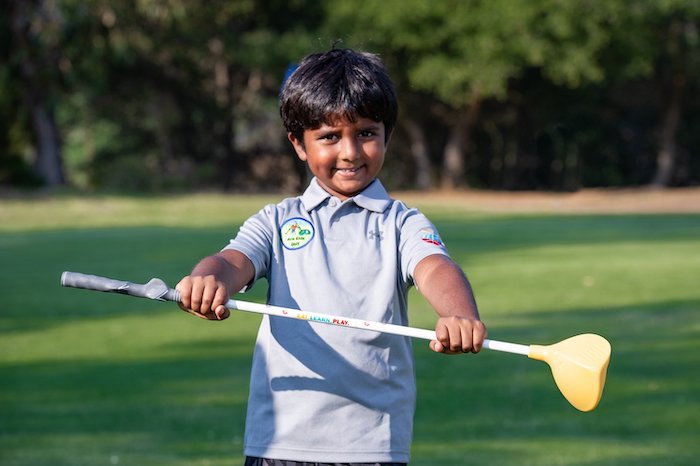
#Return2Play Fund in Focus: Aspen Institute's State of Play for Black & Brown Youth
February 24, 2023
This month we've been celebrating Black History Month in the US and the release of the Return to Play Fund PSA produced by our founding partner, ESPN, and its accompanying resources by sharing insights from members of our Return to Play Fund Expert Advisory Council. The Council, comprised of diversity, equity, inclusion, public health and youth sports experts was instrumental in helping us develop the Fund to ensure that Black and Brown youth in the US are not further disadvantaged post-pandemic.
Today, we are taking a look at The Aspen Institute’s 2021 and 2022 State of Play reports and findings specific to Black and Brown youth. Tom Farrey, founder and executive director of the Aspen Institute's Sports & Society Program is one of the Fund's youth sports experts.
The signature initiative of the Sports and Society Program, Project Play, develops, applies, and shares knowledge that builds healthy communities through sports. It identifies access and quality gaps in sport activities for youth and helps organizations fill them. Since 2013, strategies advanced through Project Play have inspired hundreds of organizations to take reinforcing actions and governments from federal to county levels to introduce new policies and foundations to unlock more than $60 million in grants for grassroots programs.
Tthe Return to Play Fund centers its work around the reality that while sports and play are critical to child development, provision for both in Black and Brown communities has always been inadequate. According to Project Play's 2021 research:
- Only 42% of African American and 47% of Hispanic parents anticipate their child resuming sports activities at the same or higher level than before COVID-19
- 44% of families have reported that their community-based program has closed, merged or returned with a limited capacity
- Black and Brown kids have less access to safe, affordable play spaces that don't require transportation
- Lower-income kids are 6x more likely to quit youth sports than their more well-off peers

Last December, Project Play released State of Play 2022 which provides an analysis of trends in youth sports delivery in the United States covering participation, physical and mental health, coaching and costs of play for youth aged 6 to 18. The high-level takeaway ultimately showed that while there is a greater appreciation by parents and policymakers for the physical and mental benefits of staying active, there are still significant barriers to keeping kids playing coming out of the pandemic.
These barriers remain significant for Black and Brown youth. Costs to play especially differed for Black families. While the average family paid $883 annually in one child's primary sport, Black families spent $574 - much less than parents who are Hispanic/Latino and White. Additionally, “children in the US are still having different sports experiences based on money”, the lowest income kids are still playing sports at a much lower rate than they did in 2012 (34%).
These inequities become more apparent when broken down by cities and communities. Released in August 2022, the State of Play Oakland report shows that White children are three times more likely than Latino youth and two times more likely than Black and Asian kids to play sports on a recreation center team.
“Too often, the Black family will say (playing sports) is a way for my kid to get out of this difficult situation and go to college, and the White family will say this is an opportunity for my kid to be physically active and make friends,” said former NBA player Antonio Davis, an Oakland native who co-chairs the Positive Coaching Alliance’s Racial Equity and Access in Youth Sports Task Force. “These are two totally different perceptions that can lead to different results. If kids think they can’t be the best, they ask themselves, ‘Why play?”
State of Play 2022 also found that 27.3% of Hispanic youth sports parents say their child lost interest in sports from 2021 to 2022. The figure is 26.2% for Black parents.
As the Return to Play Fund continues to develop, data and research such as this are critical to understanding the circumstances and situation for children in the US when it comes to physical activity, sports and play. Our collaborative mission is to support non-profit community sport organizations that are dedicated to getting young people of color moving again and providing them with guidance and opportunities to grow, succeed and be confident in their abilities.
Learn more about the Return to Play Fund and how you can get involved. Parents and guardians, young people and coaches and youth sport providers, please take advantage of the Return to Play Funds free digital resources - provided by Council members and other trusted sources - to help navigate a healthy and equitable return to play.